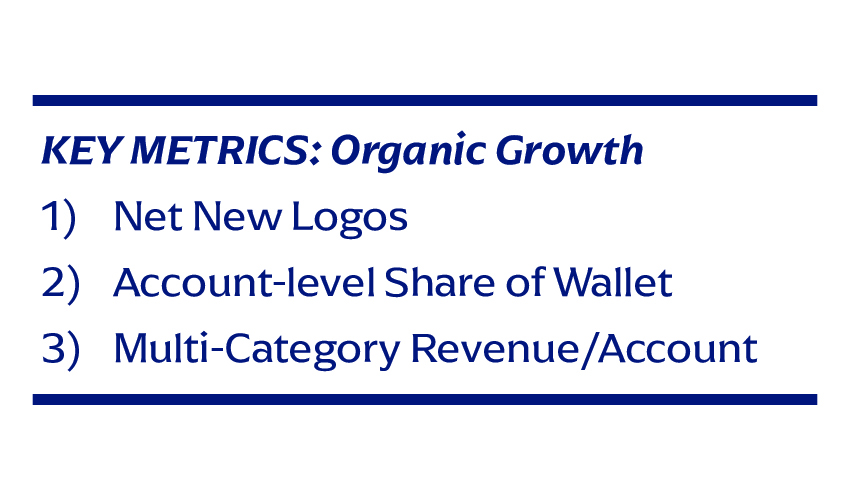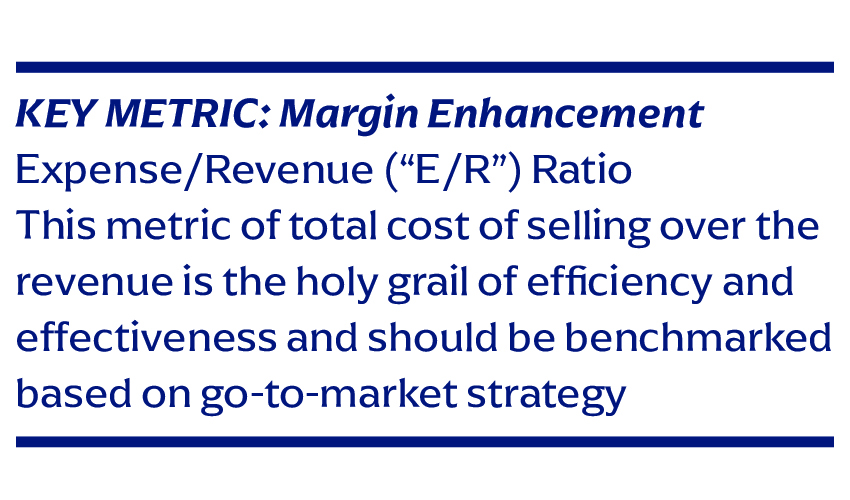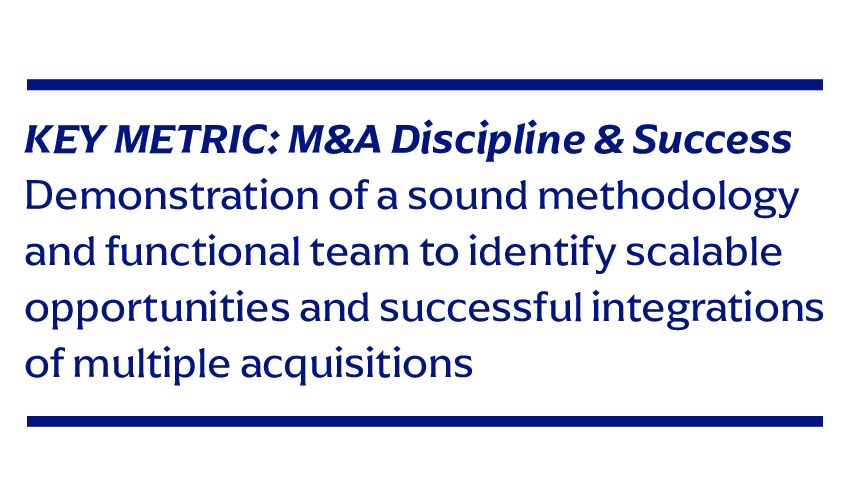Four Key Strategic Commercial Levers to Create Value Every Leader Must Know

Whether publicly traded, family owned, or a company in private equity portfolio, manufacturing executives are under consistent pressure to drive shareholder value amid shifting industry dynamics. With market growth for manufacturers often characterized by slow or low organic expansion, leveraging targeted commercial strategies becomes essential to prove value to share owners, investors and deal partners.
This article examines four pivotal growth levers in every successful executive’s toolkit—top-line growth, margin improvement (specifically through optimizing the cost of selling), mergers and acquisitions, and innovation—and explains how a disciplined commercial approach can power transformational change.
Lever 1: Top-Line Growth
At the heart of any successful value creation story is the pursuit of robust top-line growth. For manufacturing companies, this means not only expanding market share but also deepening penetration in existing markets. A nuanced sales and marketing approach is key.
Customer Segmentation and Targeting
In a low-growth environment, winning new business often involves focusing on niche segments where competitive dynamics allow for differentiated offerings. A refined segmentation strategy can help manufacturers tailor their value propositions, ensuring that marketing efforts resonate with the most profitable customer segments.
Value-Based Selling
Transitioning from a cost-focused narrative to one that emphasizes value creation can unlock revenue potential. This approach involves rethinking pricing strategies, moving beyond simple cost-plus models and leveraging competitive intelligence to articulate how a manufacturer’s solution drives tangible outcomes for customers.
Digital and Data-Driven Initiatives
Modern Sales and Marketing functions are increasingly reliant on data analytics to forecast demand, optimize channels and personalize customer outreach. Digital transformation—encompassing everything from advanced CRM systems to predictive analytics—can be a critical differentiator in achieving organic growth, particularly when traditional market expansion is challenging.

In slower market conditions, organic growth often emerges through the strategic expansion of existing accounts, cross-selling and upselling initiatives. These tactics are underpinned by a strong customer relationship management foundation that enables a deeper understanding of customer needs and more agile responses to market shifts.
Lever 2: Margin Improvement Through Optimizing the Cost of Selling
While revenue expansion is vital, profitability hinges equally on the ability to manage and reduce the cost of selling. Margin improvement in manufacturing is not solely about cost-cutting; it’s about enhancing sales efficiency and reallocating resources to activities that generate higher returns.
Efficiency in Sales Operations
Streamlining the sales process—from lead generation to closing—can yield significant cost savings. By investing in training, leveraging automation and refining incentive structures, companies can boost sales productivity without necessarily expanding headcount.
Channel Optimization
Reassessing and optimizing distribution channels ensure that every sales dollar is deployed effectively. This might involve consolidating overlapping channels, renegotiating terms with distributors or investing in digital channels that offer better margins compared to traditional sales forces.
Performance Metrics and Analytics
A sophisticated approach to tracking sales performance can identify inefficiencies in the sales funnel. Utilizing key performance indicators (KPIs) and real-time analytics allows leaders to reallocate resources swiftly, ensuring that marketing spend directly contributes to higher conversion rates and improved margins.

For private equity investors, margin improvement is a critical lever because it not only improves short-term profitability but also strengthens the foundation for sustainable, long-term growth.
Lever 3: Mergers and Acquisitions (M&A)
M&A activity has long been a cornerstone of value creation in the private equity space. For manufacturers, strategic acquisitions can accelerate growth, fill product gaps and expand market reach. However, the true value of M&A lies in how well these deals are integrated into the company’s existing commercial framework.
Strategic Fit and Due Diligence
The sales and marketing dimensions of due diligence are paramount. Beyond traditional financial metrics, acquirers need to assess the target company’s market positioning, customer base and channel efficacy. This comprehensive evaluation ensures that acquisitions complement and strengthen the existing go-to-market strategy.
Seamless Integration
Post-acquisition, harmonizing sales and marketing functions is essential. Integrating teams, aligning brand messages and unifying sales strategies can unlock significant synergies. These efforts often yield not only revenue growth but also improved cost structures through economies of scale.
Leveraging Cross-Selling Opportunities
Acquisitions frequently open doors to cross-selling opportunities. By aligning product portfolios and harmonizing sales channels, companies can tap into new customer segments and drive incremental revenue—an especially attractive proposition in markets where organic growth is modest.

Successful M&A initiatives are often a bellwether of valuation multiples for private equity firms, as integrated operations that drive both growth and efficiency tend to command premium market valuations.
Lever 4: Innovation as a Catalyst for Growth
Innovation is the lifeblood of manufacturing transformation. It fuels product development, enhances competitive positioning and opens up new revenue streams. In a rapidly evolving market, a close collaboration between sales, marketing and R&D is essential for sustained innovation.
Voice of the Customer
Sales and marketing teams are uniquely positioned to gather critical insights about customer challenges and unmet needs. These insights can directly inform innovation strategies, ensuring that new products and features are aligned with market demands.
Accelerated Time-to-Market
In a competitive environment, speed matters. Streamlining the innovation process—from ideation through commercialization—can provide a significant edge. A marketing-led innovation model helps to rapidly test and iterate new concepts, ensuring that the manufacturer remains agile in a changing landscape.
Brand Differentiation
Continuous innovation strengthens a manufacturer’s brand, reinforcing its reputation as a market leader. This differentiation is particularly valuable in slow growth scenarios, where the ability to introduce groundbreaking products can stimulate organic demand and create new market opportunities.

Innovation, when executed with a clear commercial focus, not only drives top-line growth but also creates a virtuous cycle where enhanced customer satisfaction feeds back into higher margins and competitive differentiation.
Why Does it Matter?
Each of these levers addresses a critical component of shareholder value creation. With a disciplined approach, executives in manufacturing and distribution companies can navigate market uncertainties, enhance their competitive positioning and deliver robust returns to investors.
Effective execution not only transforms operational performance but also has profound implications for valuation. Companies that consistently demonstrate growth, margin expansion and successful integration of M&A and innovation initiatives tend to command higher valuation multiples in the market. This is because investors recognize the tangible benefits of a well-executed go-to-market strategy—one that marries operational efficiency with market insight.
The strategic model underpinning this methodology is both holistic and dynamic. It starts with a rigorous assessment of current performance metrics and market positioning. Next, targeted commercial initiatives are deployed, with sales and marketing teams at the forefront of execution. Finally, continuous monitoring and recalibration ensure that the strategy remains responsive to market shifts and evolving customer needs.
This integrated approach not only drives immediate financial performance but also builds a resilient foundation for future growth. For private equity portfolio leaders, operating partners and deal partners alike, these four key levers provide a strategic roadmap for navigating today’s competitive landscape and positioning for future success. In an era where organic growth requires creativity, agility and a relentless focus on customer value, a well-integrated, sales-driven approach is the key to unlocking lasting shareholder value.

Need more information?
For more insights and strategies on navigating strategic commercial levers to create value, contact Alexander Group today.



